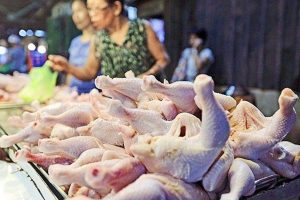PHL chicken production seen rising 3.8% in 2025
PHILIPPINE chicken production is expected to increase 3.8% to 1.63 million metric tons (MT) in 2025, according to the US Department of Agriculture (USDA). In a report, the USDA’s Foreign Agriculture Service said that the increase in production follows reduced feed costs and an easing in the number of highly pathogenic avian influenza (HPAI), or […]

PHILIPPINE chicken production is expected to increase 3.8% to 1.63 million metric tons (MT) in 2025, according to the US Department of Agriculture (USDA).
In a report, the USDA’s Foreign Agriculture Service said that the increase in production follows reduced feed costs and an easing in the number of highly pathogenic avian influenza (HPAI), or avian flu, infections.
Some 53 municipalities across nine provinces have active cases of avian flu, according to the Bureau of Animal Industry (BAI) as of Sept. 27.
It added that the adverse impacts of African Swine Fever (ASF) on pork production will drive chicken consumption in the Philippines.
A recent surge in ASF cases was reported in the Philippines, which the Department of Agriculture blamed on the recent rains and weak biosecurity.
“Despite high operating costs, primarily due to high domestic corn prices, the chicken meat sector rapidly expanded in the first and second quarters of 2024… this growth will generate positive momentum for 2025,” the USDA added.
The USDA said the decline in imported soybean meal prices will carry over into next year and offset the cost of corn used in animal feed.
“Challenges such as the tight supply of day-old-chicks will temper the growth of chicken meat production,” it added.
The USDA said that the limited supply of breeding stock may weigh on production growth.
“Higher prices mean more commercial raisers are willing to turn day old chicks (DOC) into broilers 28-35 days later. The elevated DOC prices will temper production growth in the rest of 2024 and 2025,” it added.
Meanwhile, the USDA reported that chicken imports are expected to increase to 480,000 MT from the 470,000 MT forecast in 2024.
“The price competitiveness of imported chicken products vis-à-vis domestically produced remains very attractive, especially for food service and institutional buyers seeking to maintain specific price points,” it added.
Meat Importers and Traders Association President Emeritus Jesus C. Cham said that imported chicken, along with pork, continues to be in demand due to the “scarcity of local production.”
“Delayed shipments are also arriving together en masse, squeezing liquidity of importers. With new arrivals, the pendulum is shifting to the other end with some selling below landed cost,” he said via Viber.
Meat imports in the seven months to July rose 7.8% to 757,296 MT, according to the BAI. — Adrian H. Halili













